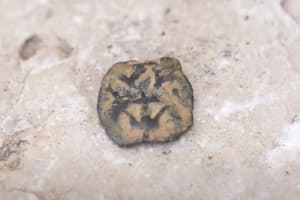WATCH: An ancient oil lamp and connection to Jesus' parable of the 10 virgins
Uncover the fascinating world of ancient artifacts with archaeologist and coin expert Aaron Goel as he showcases a remarkable 1st-century A.D. oil lamp from the Holy Land. This "Herodian" or "Scraped Oil" lamp offers a tangible connection to the time of Jesus and illuminates the rich history of both Jewish and pagan cultures.
Click on the video above to watch or read the transcript below.
Welcome back. I'm Aaron Goel, an archaeologist and a coin expert.
In this video, I would like to showcase an oil lamp from a private collection that dates back to the first century AD. This lamp, known as the "Herodian Lamp" or "Scraped Oil Lamp," was commonly used in the Holy Land by Jews and pagans during Jesus' time.
It's made of pottery and lacks figurative designs, in accordance with the Old Testament Mosaic Law that forbade depicting animals or human figures, which was correct for Jewish use. Crafted on a potter's wheel, the lamp starts as a small bowl with an opening at the top for filling with olive oil. A small rim around this upper opening prevents leakage.
After a partial drying, the potter adds the nozzle, where a linen wick will be lit forward and scrapes the connection with the knife, giving the lamp its name.
This specific lamp has a small perforation at the far back, likely an error made by the potter while trying to pierce the nozzle and the body of the lamp with a long stick. This imperfection and the clean nozzle indicates it was never filled or lit, and was probably placed in a tomb as a funerary offering.
What's fascinating is that this type of lamp is likely the one referenced in Jesus' parable of the "Ten Virgins" in the Gospel of Matthew 25. In this story, ten virgins await a bridegroom, but only five have enough oil in their lamps. The wise virgins are prepared, while the foolish ones are called off guard.
Some Jewish sources mention a clever design where a perforated egg filled with olive oil was placed above the lamp's filling hole, slowly refilling the lamp as it burned. If true, perhaps the wise virgins in the parable carried such kind of eggs or vessels in their bags. Who knows?
Jesus may have held this lamp, or another similar one, once telling the parable – telling the believers of the Gospel to always keep their spirits aware with extra oil or prayer while waiting for the groom.
Jesus often used the lamp as a metaphor, saying: "I am the light of the world. Whoever follows me will not walk in darkness, but will have the light of life."
This lamp helps us visualize the powerful messages in this teaching.
As we wrap up, remember that while antiquities trade is legal in Israel, illegal excavation and looting are strictly prohibited. It's crucial to protect our national heritage by avoiding participation in the antiquities market.

The All Israel News Staff is a team of journalists in Israel.
You might also like to read this:














